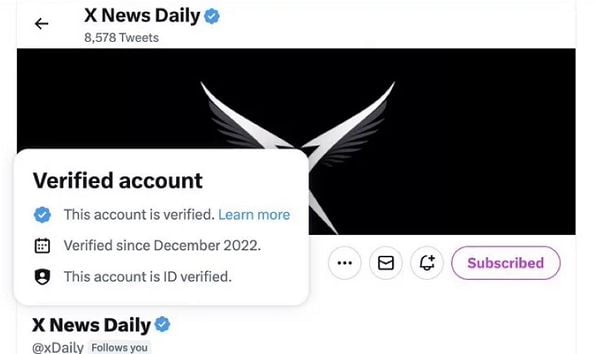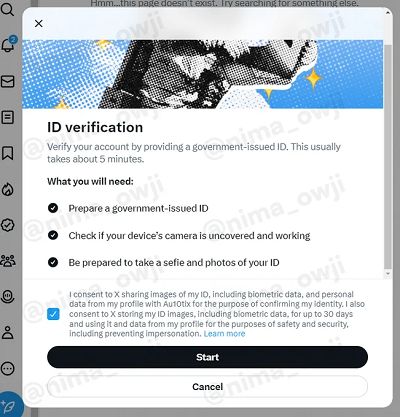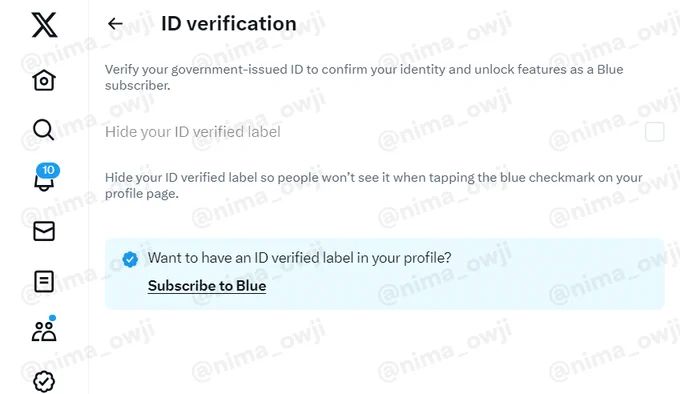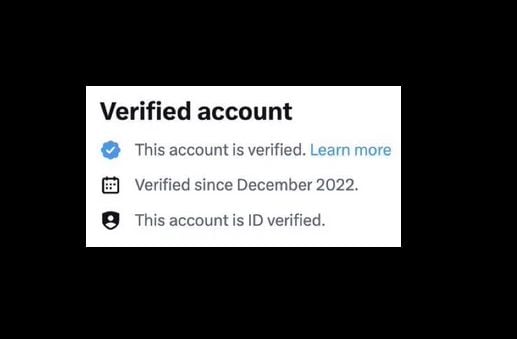X continues to experiment with ID verification, with new code added to the app now pointing to the coming addition of verification elements.

As you can see in this example, posted by X News Daily, X is looking to add a new element to its account details pop-up which would confirm whether an account has verified its ID.
X is also looking to add a new screen which outlines its ID confirmation requirements (via Nima Owji).

Users would need to provide both a current selfie and their government-issued ID, with X reportedly looking to outsource its ID confirmation to a company called au10tix.
That would better enable X to confirm user identities at scale, because checking the documentation of 250 million people is a big ask, and X simply doesn’t have the internal capacity to do this alone.
LinkedIn’s taking a similar approach with its new ID verification elements, though a limitation in this respect is that each platform will likely need separate regional partners to outsource this checking work to. LinkedIn’s only offering ID verification in limited capacity at present, and only in the US, with a broader program set to include more providers to confirm such info.
X will likely face the same limitations, though it could still be a significant step, especially if X also limits access to elements of its X Premium (formerly Twitter Blue) package to only those that have confirmed their ID.
That’s seemingly where it’s headed, according to the wording in this example:

That would upset at least some users, but it could be a big advance towards eliminating bots and spam, and clarifying the true identity of X users.
Really, ID verification is the key measure to combat spammers and scammers in social apps. The main problem, as noted, is that actually verifying people’s identification documents takes time, and with millions, even billions of users in some cases, the apps themselves simply don’t have the capacity to verify such at scale.
But if there was a way to verify each users’ ID, and implement effective cross-checks to halt impersonation, that would solve many problems in this respect.
This was the originally-stated focus of X’s X Premium project, with Elon Musk explaining that his main aim with paid verification was to “authenticate all real humans.”
In the months prior to buying Twitter, Musk had made a lot of noise about battling bots, even suggesting that previous Twitter management had knowingly lied about the amount of fake profiles in the app in order to inflate its market value. Indeed, Musk claimed that the platform was overrun by bot accounts, with up to 20% of all of Twitter’s listed active users actually being fakes (Twitter had repeatedly reported that 5% of profiles in the app are fake).
Since taking ownership of the app, however, Musk has made little mention of the specific numbers, while also claiming to have defeated bots through newly implemented policies.

Which may or may not be true. X is no longer a publicly listed company, so it’s not under any obligation to provide the same level of detail in reports on its user activity.
But if X were actually serious about eliminating fakes, then ID verification is one way to do it, though that would also come with a range of additional complications that could run counter to X’s broader aims.
For one, many users prefer to remain anonymous, which would no longer be possible if they had to share their ID info. That would spook many X users, which is likely the reason why it’s also trying to reassure people that this won’t be a requirement as such with this new element.
Many people also run multiple, unconnected accounts, and implementing ID verification could impact this, by restricting the amount of profiles a single person could operate.
Or it would hurt X’s user numbers. For example, if X were to discover that half of its 250 million users were actually running two accounts each on average, that could impact its ad reach figures, as it would then technically need to list them as a single exposure, as opposed to multiple views.
All of these are things that X could overcome, in order to facilitate a form of ID verification. But broad scale linkage of government ID documents to accounts is not as straightforward as it may initially seem.
That’s why X has thus far opted for what it calls “payment verification” instead, i.e. if a user has a bank account, and is willing to pay $8 per month, then we trust that this is an actual human, as bots won’t pay, and bot farmers can’t afford to run thousands of accounts a month under this system.
Which could also be effective, if X Premium were to see massive take-up. Musk’s initial aim was that the majority of X users would simply pay, and that would go a long way to addressing such concerns, but thus far, only around 0.5% of X users are paying for a blue tick.
Conceptually, you can see where Elon was going with this. People really want a blue checkmark, so we’ll sell it to them, and when the majority of people have signed up, that’ll make bot profiles stand out (as they’ll be the only ones not verified), while it’ll also solve X’s revenue problems, by introducing a new income stream, and reduce its reliance on ads, making it less beholden to restrictions on speech.
It all makes sense, from a high vantage point. But in reality, very few people see any reason to pay for the app, while selling checkmarks, and removing them from celebrities, has also devalued this as a product, which it never should have been anyway.
An alternative colored checkmark would have been better, for paying users or those who confirm their ID, while free ID confirmation would also be more effective, though that won’t help X to get its business back on track.
The bottom line is that X should have implemented ID confirmation from the start of Elon’s reign, which is the best step towards combating bots in the app, but if you want people to pay, you’ll need a better value proposal.
On paper, the original X Premium plan does make sense. But it simply hasn’t been an effective way to address any of its core aims.
Maybe, ID verification will go some way towards correcting this, at least in one respect.



